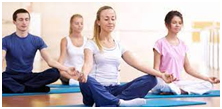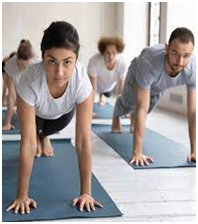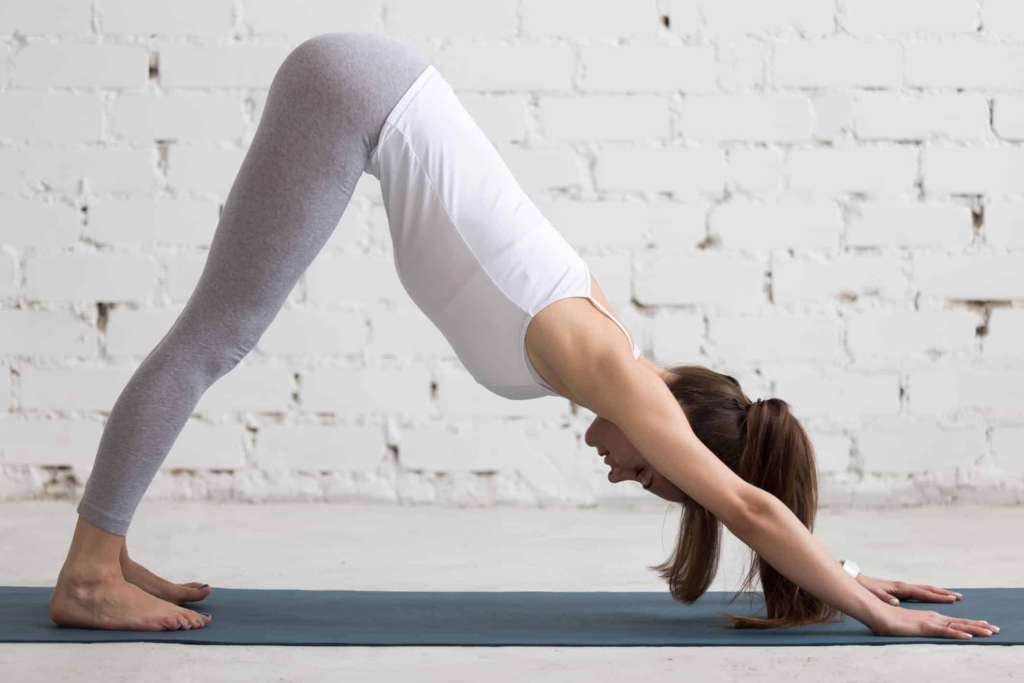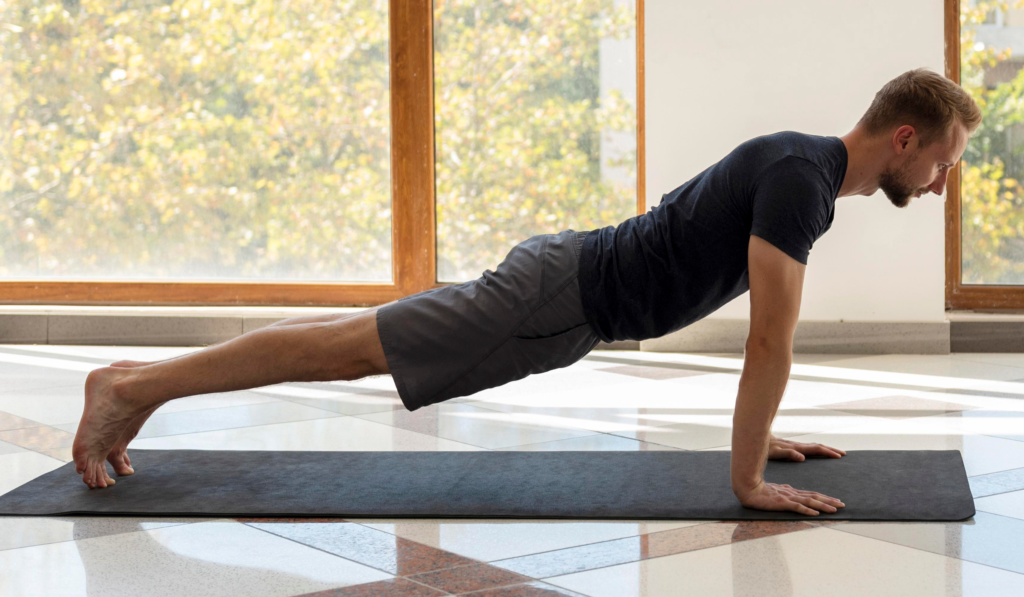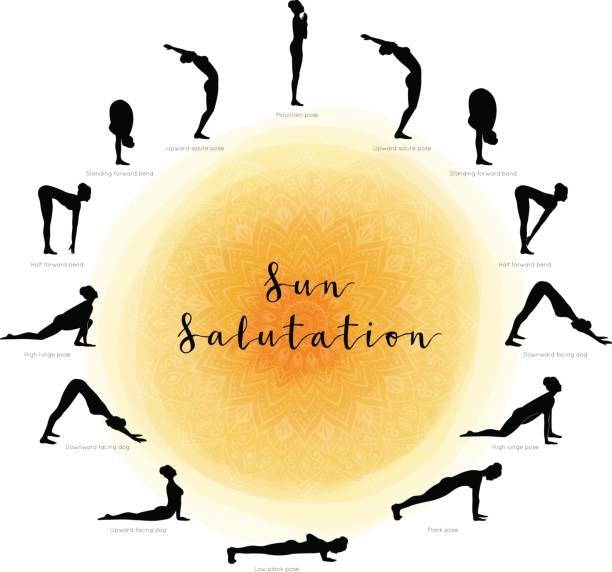Yoga provides training of mind and body to bring mental and emotional balance and health. We argue that children and young people need such tools to listen inward to their bodies, feelings, and ideas. Yoga may assist them in developing in sound ways, to strengthen themselves, and be contributing social beings.
Yoga is associated with a healthy and lively lifestyle with a balanced approach to life. Studies in the field of medicine suggest that yoga is the only form of physical activity that provides complete exercise of the body because it massages all the internal organs and glands which in turn reduces the risk of many diseases. Yoga practice can reduce our stress and lead a healthy life. But in reality, to achieve the aspiration of the parents and to adjust themselves in the competitive market every student is under academic pressure which makes their life stressful. Stress, depression among adolescent not only effect their academic growth but also affect their normal growth. By practicing yoga, a person is supposed to reach a state of mental equanimity, where responses to favorable or unfavorable external events are well under the individual’s control, and responses are moderate in intensity. The science of yoga is a powerful stream of knowledge, which enables the practitioners to achieve radiant physical health, serene mind, continues spiritual uplift, and creates the ability for harmonious social living. The yoga practice among adolescent plays an important role to keeps him away from stress
“The beauty of yoga is that its benefits are available to students of every school-age group”. Yoga can be a comprehensive approach to stress, something which is needed in the often tension-filled lives of children today. Yoga can help foster motivation, cultivate internal locus of control, improve sleep, and generally encourage healthy and balanced living. Yoga may also aid in shifting self-awareness inward to children’s own cues and emotions, and thus, counteract negative social and cultural influences, including the current media pressure to be always online and available. As yoga often results in improved focus and concentration, regular practice is frequently accompanied by better academic performance. Yoga has also been shown to help children with attention problems, as well as to support executive function development. A number of studies have also suggested that yoga can assist children with special needs.
Yoga has been found to have physiological benefits for children through rehabilitation processes. Yoga improves academic performance and emotional balance. The mental benefits of yoga relate to calming the heart rate, which signals the brain to activate the parasympathetic nervous system. Similarly, yoga can guide relaxation because it reduces sympathetic activity. The sympathetic nervous system (fight or flight) is often engaged when children, similar to adults, are exposed to sensory overload. However, when the parasympathetic nervous system is activated, it increases our ability to focus and learn. Yoga is also said to reduce anxiety in young people as well as in seniors. Thus, yoga may assist healthy development and life-long learning.
As already mentioned, yoga has been recommended to promote mental health and to increase resilience and self-regulation. It has been researched in areas such as life-span development, human attachment, elderly subjects, consciousness, as well as in the medical and psychological fields. We think that what is still needed is a set of recommendations on how to introduce yoga into children and young people’s lives, based on a cultural perspective on child development and childhood sociology. Yoga is often promoted as a universal good discipline, with philosophy and practice to achieve balance and human development. Still, the pedagogy of yoga needs to be context specific and adjusted to the specific audiences of practitioners. Moreover, we believe that yoga teaching needs to be serious and multi-disciplinary yet based on children’s needs and everyday lives, with a playful and fun approach.
Yoga is like music, it relaxes your mind and body. It strengthens the muscles while building flexibility. The practice of yoga poses in the early teenage years is much more beneficial than the standard gym workouts. Today, around 1.7 million children and teens practice yoga and many schools have also given it a priority as yoga and meditation both are vital in the overall child development. Whether it is related to the mind or body, the overall development always starts from within. Yoga gives a direction to life and maintains a balance between the hectic schedule and a healthy lifestyle. If you are eager to know more benefits of practicing yoga poses then you must delve into the article without delay.
Builds and Enhances Physical Health
The distinct yoga poses help children in improving coordination, balance, strength, and flexibility. Practicing yoga poses daily also helps teens to build a strong connection to body awareness and movement. Certain yoga poses also help in detoxifying the body and improve the immune system as well, which eventually helps children to stay away from diseases.
Reduces Stress and Anxiety
High school can be really stressing for children sometimes, especially due to the exam pressure and personal challenges. Yoga aids in maintaining a calm nature, so that children don’t panic in stressful situations, rather they deal with them in a peaceful and thoughtful manner.
Improves Sleep Quality
Yoga not only reduces stress and increases flexibility, but also helps people who suffer from insomnia. This condition is common among teens nowadays due to the increase in stress levels. Some yoga practices performed before bedtime actually prepares your body for quality sleep.
Improves Concentration
Apart from all other amazing health benefits of yoga, the biggest one is that it shapes our internal brain functioning in the right way. The breathing exercises in various yoga poses aids in improving concentration to a great extent. According to a recent study, it is a proved fact that practicing yoga daily for 20 minutes enhances the functioning of the brain and helps children focus better on various tasks.
Builds Emotional Strength
Nowadays teenagers have to go through a lot of challenges related to academics or other life situations. Yoga aids teens to have a better understanding of their emotions as it’s crucial to deal with them in a peaceful way to avoid any serious damage to their mind and body. Emotional intelligence is a powerful thing that needs to be learned at an early age to combat teenage challenges. Besides connecting the children with their emotions, yoga also develops self-love and self-acceptance.
Develops Discipline
Discipline is really important to achieve anything in life. It is found that practicing yoga daily increases patience, reduces impulsivity and improves the capability to maintain attention. All these things play a fundamental role in leading a disciplined life.
Final Words
Yoga is not limited to strengthening our body and balancing our emotions, but it also offers a lot of spiritual benefits. The children at an early age may not be able to understand the spiritual tangent of yoga, but as they will grow up into adults, they will be able to leverage them as well. It is vital to make the teenagers understand and experience the benefits of yoga as it will surely help them in various aspects of their lives. Show them various yoga poses and famous people promoting them as it will make them curious to try them out.
Youth face constant pressure to excel at studies, get a job, manage relationships, and deal with numerous other problems. Armed with yoga and meditation, youth say that sailing through turbulent times is as easy as sitting calmly for 20 minutes! Let’s see how youth and students are using yoga as a tool to overcome life’s challenges.
Yoga as a Time-Management Tool
Grades, studies, sports, fests, parties – college life buzzes with so many activities! The trick lies in balancing all these with ease. “I saw a tremendous rise in my energy levels with regular yoga practice. I study, party, travel, yet have a relaxed and tension-free mind”. Yoga and meditation can keep your energy levels high through the day so you can complete daily tasks at faster pace, adding extra hours to your day!
Goodbye Exam Stress
Don’t you think it is easier to memorize the lyrics of a song than remember all that you studied? Regular practice of yoga techniques can improve your focus and memory.
Say NO To Peer Pressure, Be Yourself
Everyone wants to ‘fit in’ a particular crowd, due to which they may end up getting themselves into bad habits. ‘Friends’ might force you to have a smoke or drink to look cool. What starts off as curiosity ends up becoming an addiction? Yoga helps you to easily let go these dependencies. Regular practice of yoga can give you a natural high. You may not feel the need to get intoxicated on artificial stuff.
Fit As a Fiddle with Yoga
Fallout of addictions and sedentary lifestyle is loss of good health. Regular practice of yoga techniques, in combination with healthy food, can help restore your health. Yoga can aid in alleviating illnesses, as it helps increase immunity.
Attending Interviews Can Be a Cakewalk
Wouldn’t it be nice to not have butterflies in your stomach and be full of confidence when you go for interviews or while giving a presentation? You learn specific breathing techniques to improve your focus, concentration, and confidence. And you thought yoga was only yoga postures!
5 Yoga practices to help you get through your teenage
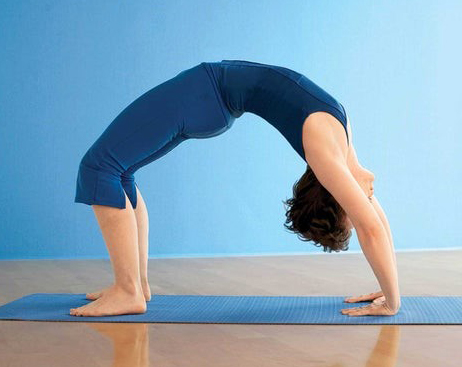
1. Chakrasana (Wheel Pose)
Benefits: Increases confidence and teaches surrender during turbulent times.
Lie on your back with your knees bent. Bring your hands on the floor next to your ears, elbows facing up, fingers pointing toward your toes, and hands spread wide. On an exhalation, lift your tailbone toward the ceiling and bring your buttocks off the floor. Take 3 deep breaths. From here, press into your hands, firm your shoulder blades onto your back, and come onto the crown of your head. Your arms should still be parallel to each other. Take 3 deep breaths. Next, press your hands and feet firmly into the floor, and on an exhalation lift your head off the floor and straighten your arms, coming into the full backbend. Lengthen the tailbone toward the back of the knees and turn the upper thighs slightly in. Once again firm your shoulder blades onto your back. Stay for 3–10 breaths and slowly lower down.
2. Parvatasana (Mountain Pose)
Benefits: Quietens an active mind and balances out mood swings common during adolescence.
Come onto your hands and knees with your knees directly below your hips and your hands underneath your shoulders. Spread your hands and press into your index fingers and thumbs. Turn your toes under, and, on an exhalation, lift your knees off the floor, lengthen your tailbone away from your pelvis, lift your sitting bones toward the ceiling, and begin to slowly straighten your legs. As you push the top of your thighs back and press into the floor with your hands, allow your heels to move toward the floor. Bring your head between your arms. Let your shoulder blades move away from your ears, and roll the upper thighs slightly inward. Stay here for 2–5 minutes. To come out, bend your knees and sit back onto your heels and move into Balasana (Child’s Pose).
3. Plank Pose (Santolanasana)
Benefits: Builds a strong core, essential throughout life.
From Down Dog, bring your torso forward and down so it makes a straight line from the crown of your head to your feet. Make sure your hands are on the ground directly below your shoulders. Spread your weight equally into all fingers. Straighten your legs and make sure that the middle of your body doesn’t sag toward the floor. Press strongly into the floor with your hands, let your shoulder blades move down your back, press the front of your thighs toward the ceiling, and imagine the energy moving out through the crown of your head. Smile softly as you look down at the floor to keep your jaw relaxed. Stay here for 30 seconds to 2 minutes. To come out, press back into Child’s Pose.
4. Aik Pada Pranamasana (One-legged Prayer Pose)
This yoga pose is a beginner level hatha yoga asana. As the name suggests, this pose aims at attaining the humility, stability and grace. Ideally, you should perform this asana in the morning on an empty stomach.
As you perform the asana, your whole body stretches and it gets rids of any numbness. It calms your nervous system and helps in enhancing your stamina.
Benefits: This is a great asana to improve stability and balance. In all, this asana helps you in gaining composure and calm, which helps you build better self-esteem and confidence.
Step To Do
- Stand straight with your arms by your sides.
- Slowly place your left leg on your right inner thigh while maintaining your balance.
- Gently take both your arms over your head and make a namaskar pose.
- Hold this position for some time while maintaining your balance.
- Get your arms back and release your left leg.
5. SURYA NAMASKAR (SUN SALUTATION):
Surya Namaskar is a set of Yoga asanas. This is a set of 12 yoga poses, plus the forward along with backward curve allow stretches, whereas deep breathing perform throughout the work assist in detoxification. Perform Surya Namaskar daily in the morning opposite the sun to gather the utmost benefits.
Benefits: Surya Namaskar is a wonderful practice for the entire body system.
How To Do?
- Follow the instructions of each of the asanas.
- Begin slowly, by five rounds, raising the counts slowly above time.
- Increase the count to 12-13 rounds, depending on the feasibility.
Caution: Surya Namaskar must not be performed during menses or pregnancy. People with hernia or spinal issues must avoid this sequence.






